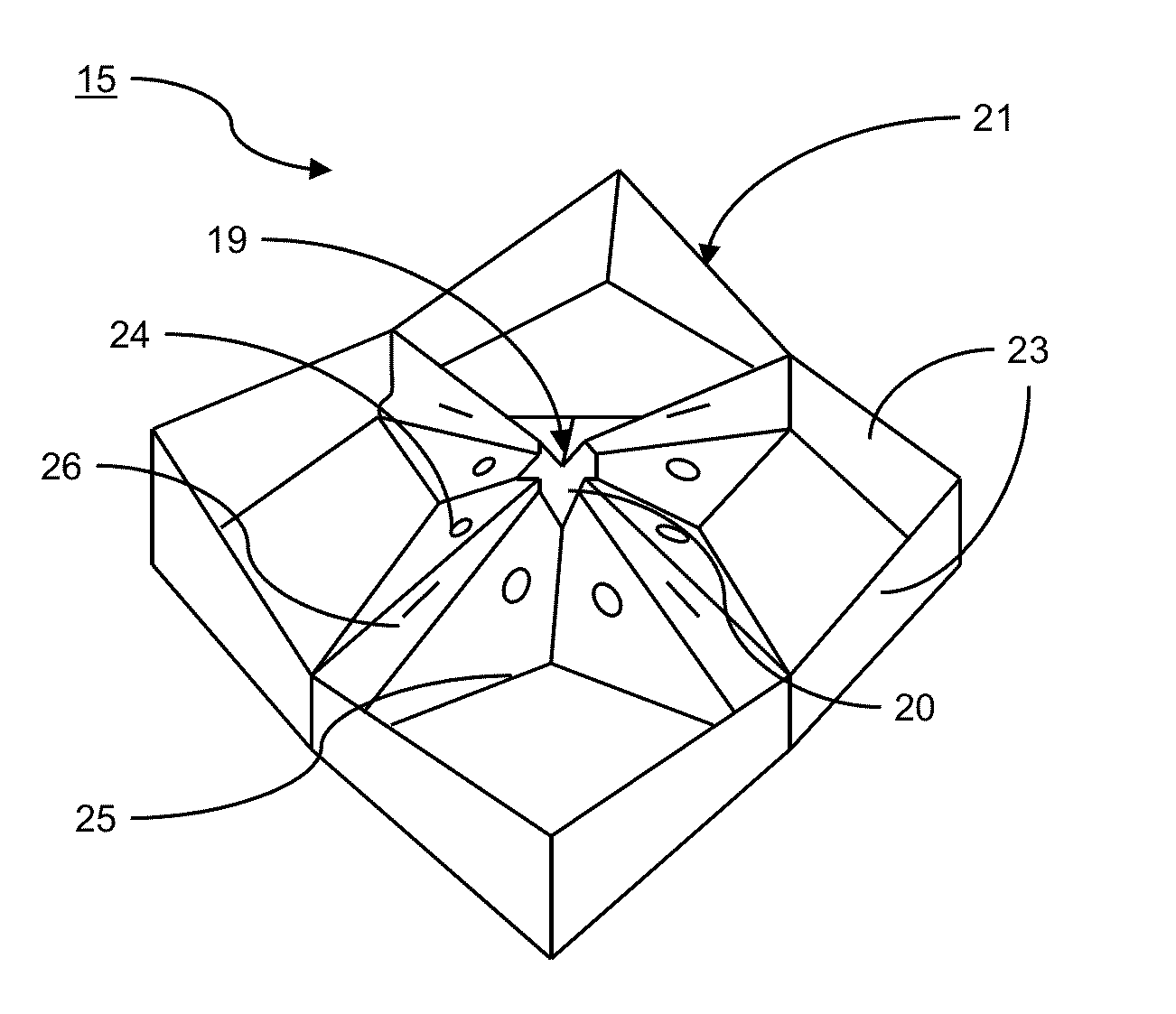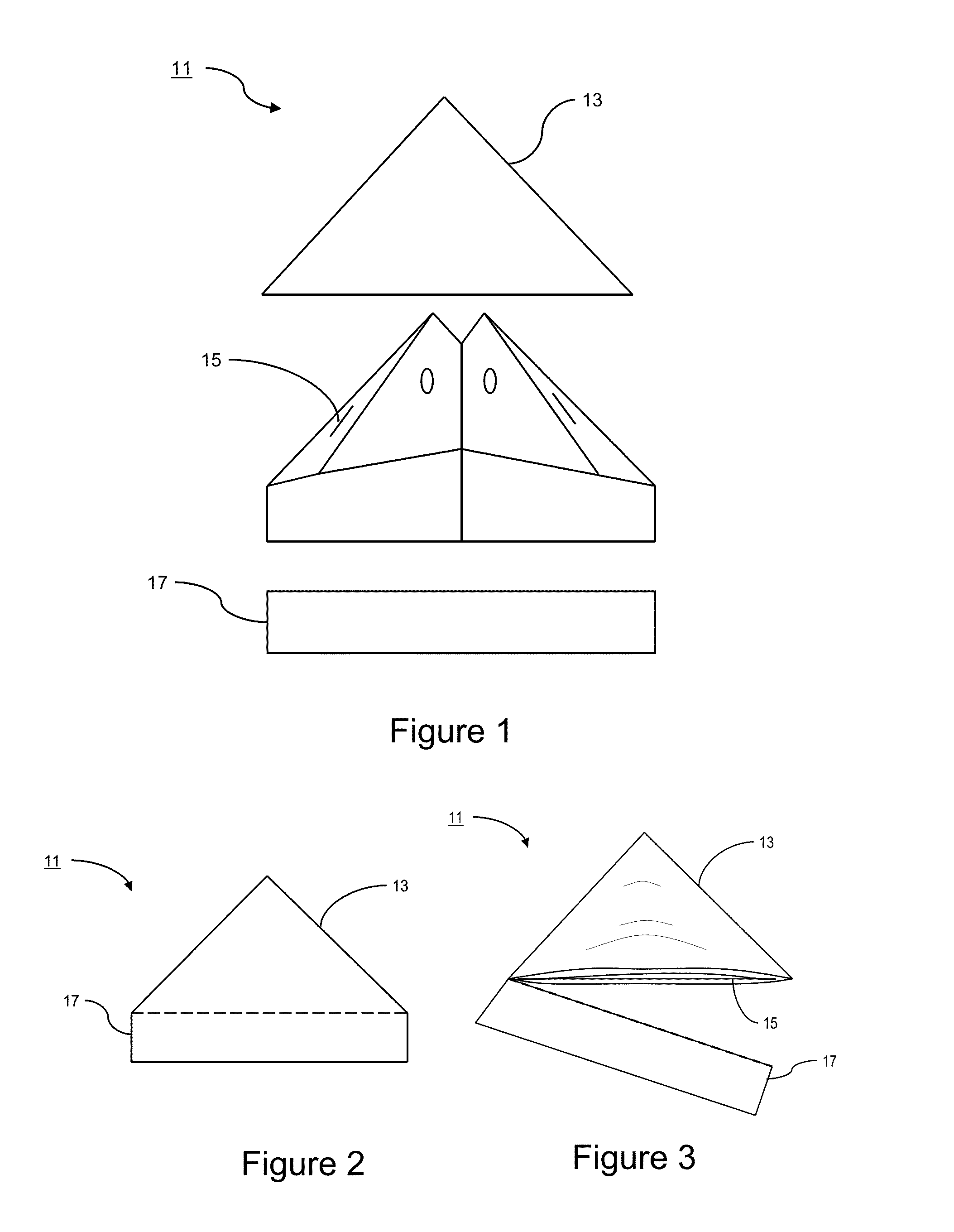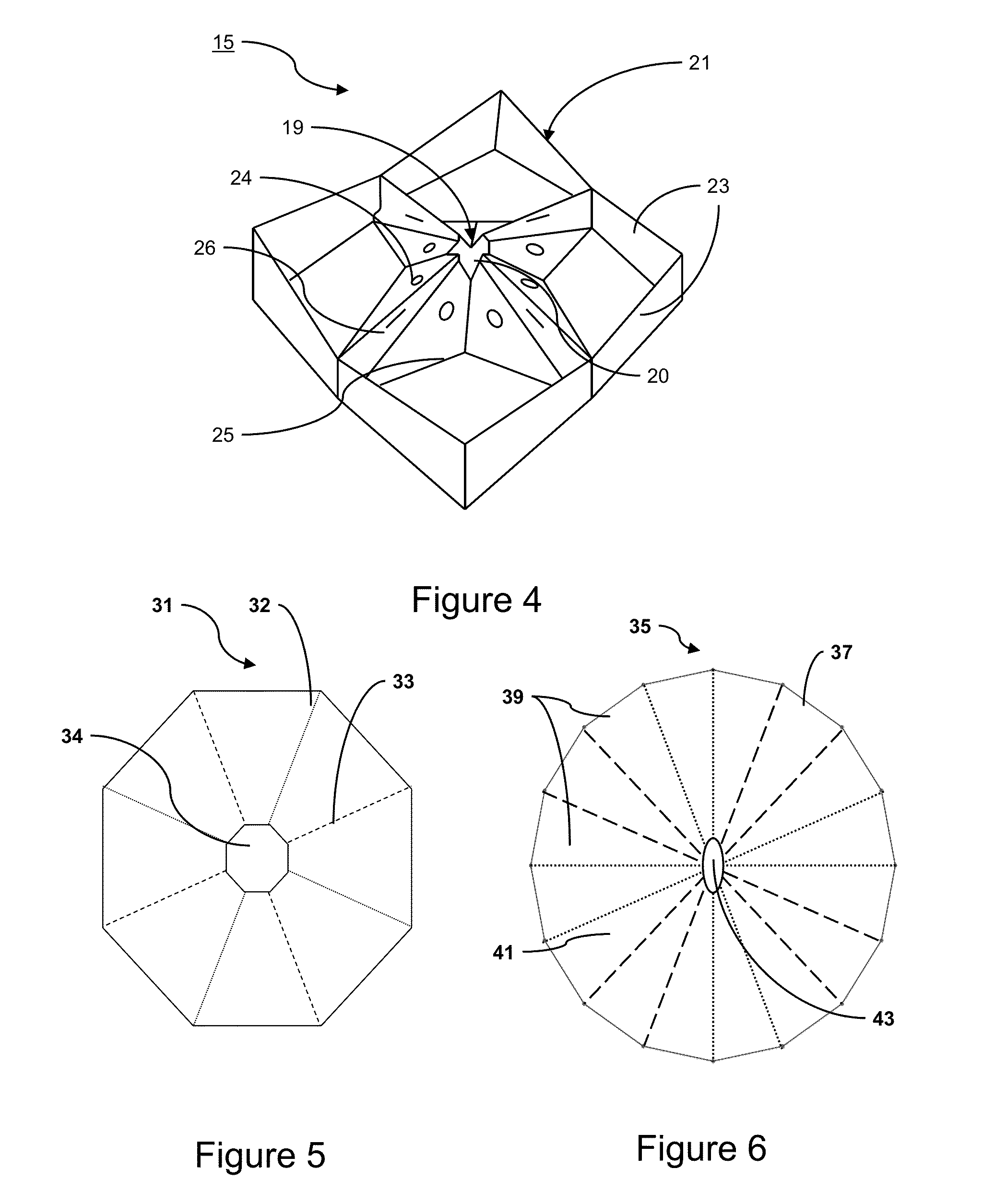Method and apparatus for lighting charcoal
- Summary
- Abstract
- Description
- Claims
- Application Information
AI Technical Summary
Benefits of technology
Problems solved by technology
Method used
Image
Examples
Embodiment Construction
[0029]Referring now to the figures, where the various numbers represent like parts throughout the several views, FIG. 1 is an exploded view of the charcoal starter assembly 11. The charcoal starter assembly 11 includes an envelope component 13, a chimney component 15 and tear off strip component 17.
[0030]FIG. 2 illustrates the charcoal starter assembly 11 as packaged for distribution. The envelope component 13 is closed or sealed by the tear off strip component 17. As will be described later the tear off component 17 may serve as a wick for igniting a combustible medium, and additionally it provides a medium on which instructions for the use of the charcoal started assembly may be printed.
[0031]FIG. 3 illustrates the charcoal starter assembly 11 wherein the tear off strip component 17 is partially detached from the envelope component 13 before the removal of the chimney component 15.
[0032]The charcoal starter assembly 11 is preferably made out of the combustible material such as pap...
PUM
| Property | Measurement | Unit |
|---|---|---|
| Shape | aaaaa | aaaaa |
| Combustion | aaaaa | aaaaa |
Abstract
Description
Claims
Application Information
 Login to View More
Login to View More - R&D
- Intellectual Property
- Life Sciences
- Materials
- Tech Scout
- Unparalleled Data Quality
- Higher Quality Content
- 60% Fewer Hallucinations
Browse by: Latest US Patents, China's latest patents, Technical Efficacy Thesaurus, Application Domain, Technology Topic, Popular Technical Reports.
© 2025 PatSnap. All rights reserved.Legal|Privacy policy|Modern Slavery Act Transparency Statement|Sitemap|About US| Contact US: help@patsnap.com



